Ten-thousand-year History of a Pool – What Peat Hides in the Březina Nature Reserve in the České Stř
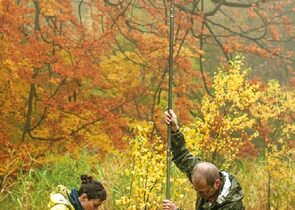
Sediments of water bodies and peatlands harbour archives of the past. Investigation of them may provide information about what past ecosystems looked like. Which changes have natural ecosystems undergone over thousands of years? How have they responded to climate change or shifts in landscape exploitation by humans? Answers to these questions may help setting limitations to site management as well as defining a baseline for the natural ecosystem restoration. They can show us which changes have taken place in a particular area many times in the past and what, on the other hand, is an unprecedented present issue requiring active management. We will show the possible application of palaeoecological research in nature conservation on the example of the Březina Nature Reserve (NR) and Site of European Importance (SEI, pursuant to Act No. 114/1992 Gazette on Nature Conservation and Landscape Protection, as amended later, the term for Site of Community Importance, SCI, later Special Areas of Conservation, SAC, under the European Union’s Habitats Directive), a unique wetland in the České Středohoří/Central Bohemian Uplands. It may be an example for other sites at which sediment elimination often destroys the heritage which may turn out to be a basic natural archive if carefully investigated.
Nature Conservation 2024 — 30. 5. 2024 — Research, Surveys and Data Management — Print article in pdf
On the Origin of Czech Wolves Using the Slavkovský les/Slavkov Forest Mts. As an Example
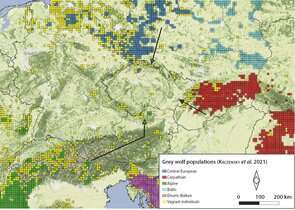
Despite the considerable effort of scientists and conservationists to clarify all aspects of the biology of the Grey wolf (Canis lupus) and its expansion in Central Europe, various misconceptions and mistakes live on with the general public, which may lead to needless conflicts. The purpose of this contribution is to clarify the origin of Czech wolves in the light of the return of wolves to Central Europe, using the example of an area with a rich hunting tradition and of extraordinary importance from the point of view of nature conservation.
Nature Conservation 2024 — 30. 5. 2024 — Research, Surveys and Data Management — Print article in pdf
The Species Concept in Nature Conservation Theory and Practice
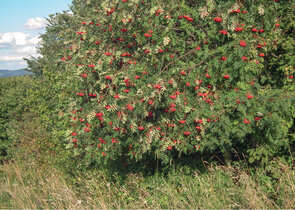
It is no secret that there hardly is any other issue in biology which has been full of contradiction as the species, whether as a concept, category or taxon in systematics. The continuing debate which set of individuals could be considered the species resulted in at least 35 various concepts: although most species concepts have strong implicit similarities and they in some extent overlap each other, some of them exclude others (ZACHOS 2015, 2018b). It is necessary to mention that many of them in the fact do not define what species are or should be but rather provide differently complicated approach how to delimitate them (MAYDEN 1997, QUEIROZ 1998, 2007, STEWART 2018, REYDON & KUNZ 2019). Taking into account the extent of the debate the following reflection offers only a glimpse of the topic from a point of view of nature conservation, not an exhaustive analysis.
Nature Conservation 2023 — 5. 6. 2023 — Research, Surveys and Data Management — Print article in pdf
A Prehistoric Bear Cub from the Javoříčko Karst
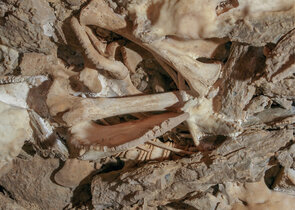
Every cave represents a unique natural phenomenon, preserving the complex links between living and non-living nature. They often contain paleontological findings as well as archaeological monuments connected with the development of the humans. The remains of animals get into the caves through the sinking of debris and alluvium. Some animals use caves for hibernation, others as shelters, dens, and food stores. And some find death underground after being caught in a natural trap...
Nature Conservation 2023 — 5. 6. 2023 — Research, Surveys and Data Management — Print article in pdf
Restoration of a meadow wetland and its effect on aquatic invertebrates
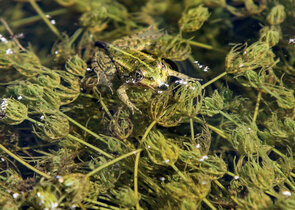
Lowland wetland meadows are among the most endangered habitats in the Czech Republic. The main drivers of their decline and loss include particularly decline in traditional management measures, targeted draining, consequent overgrowing by natural self-seeding as well as spreading aggressive plant species the latter excluding wild plant and animal species there. Thus, suitable meadow wetland management should aim namely at maintaining an open character of the above habitat effectively provided by grazing and mowing.. Although it may not be apparent at first glance, these measures can also significantly affect small water bodies in the immediate vicinity of the managed area. The article presents the project entitled Management measures and assessment of their impact on meadow wetland biodiversity and it introduces the pilot results of water body hydrobiological monitoring in a meadow wetland near the village of Krumvíř (South Moravia).
Nature Conservation 2023 — 5. 6. 2023 — Research, Surveys and Data Management — Print article in pdf
Show Caves as Important Hibernacula of Bats in the Czech Republic
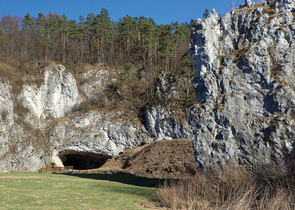
The International Union of Speleology (UIS) has declared 2021 as the International Year of Caves and Karst (IYCK). Unique phenomena in our landscape have therewith received deserved attention. Of more than 2,460 karst caves in the Czech Republic, 14 are show caves. All of them are fully legally protected according to national law and in addition, most of them are also protected as important bat hibernation sites (hibernacula) at the European level pursuant to the European Union’s legislation, namely the Habitats Directive. An important pillar of nature conservation is regular monitoring of Specially Protected animal species, and this also is the case in caves.
Nature Conservation 2022 — 25. 5. 2022 — Research, Surveys and Data Management — Print article in pdf
Monitoring Non-native and Invasive Alien Species in the Czech Republic
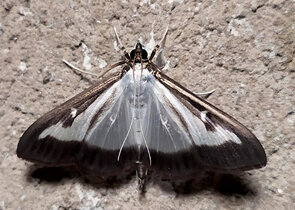
Invasive alien species (IAS), together with natural ecosystem fragmentation, degradation, destruction and loss, growing natural-resource consumption, environmental pollution and climate change, are among the main negative factors threatening native species and the biodiversity of native ecosystems. In addition, they can cause high economic damage/financial costs or adversely affect human health. Due to the ability of IAS to spread, an isolated approach to their management at the level of individual regions or countries is usually not effective; we need a targeted and tailored strategy that transcends national borders. Therefore, Regulation (EU) No 1143/2014 of the European Parliament and of the Council on the prevention and management of the introduction and spread of invasive alien species was adopted in the European Union, which was transposed into the Czech Republic’s legal order by amending Act No. 114/1992 Gazette on Nature Conservation and Landscape Protection, and other laws related to the issue, entering into force January 1, 2022.
Nature Conservation 2022 — 25. 5. 2022 — Research, Surveys and Data Management — Print article in pdf
Temporarily Unmown Grass Strips – A Hope for Productive Meadow Insects?
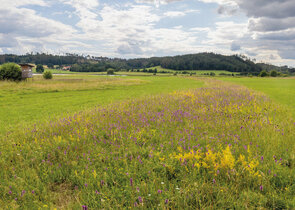
The agri-environmental-climate measures (AECM) announced by the Ministry of Agriculture of the Czech Republic are intended to support management methods mitigating the negative effects of intensive farming on the landscape and its inhabitants, including insects. Despite their productive nature, permanent grasslands are an important landscape component hosting a wide range of invertebrates. The right balance of production practices and compensatory measures can make a significant contribution to maintaining the diversity of grassland organisms and the ecosystem services they provide. The Nature Conservation Agency of the Czech Republic (NCA CR) has therefore commissioned a study on the effects of temporarily unmown grass strips on the diversity and abundance of meadow organisms. The aim of the study was to verify whether the retained parts of grass stands have a positive effect on the biota on common managed meadows of various sizes.
Nature Conservation 2022 — 25. 5. 2022 — Research, Surveys and Data Management — Print article in pdf
Shall We Go for Krkonoše/Giant Mts. Black Grouses with a Computer?
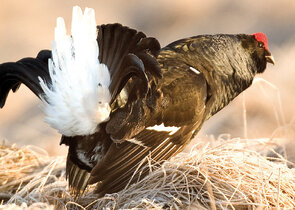
Yes, this is possible. Although computer modelling will not save the Black grouse, its outputs can significantly help in planning various practical measures in the field, regulating tourists at high-risk sites, and educating visitors. Habitat modelling, which uses the possibilities of geo-information technologies, remote sensing data, and advanced spatial analysis methods (e.g. Hirzel & le lay 2008, ElitH & leatHwick 2009), is applied significantly in the study of ecological requirements of (not only) animal species. These methods, technologies, and data allow extensive analyses of the relationships between the occurrence of species of interest and relevant environmental factors (e.g. Franklin 2010, Guisan et al. 2017). A common approach is to model the current or potential occurrence of species (e.g. tHuiller et al. 2004, Hirzel et al. 2006, Basille et al. 2008); the aim is to determine the landscape potential for their perma- nent or temporary occurrence and to evaluate the significance of individual environmental factors for their spatial expansion. Thus, habitat modelling is currently one of the most widely used approaches in conservation biology (e.g. Huck et al. 2010, Basille et al. 2013, Guisan et al. 2013).
Nature Conservation 2022 — 25. 5. 2022 — Research, Surveys and Data Management — Print article in pdf
How We Do (not) Implement the Water Framework Directive in Improving the Morphological Status of Wat
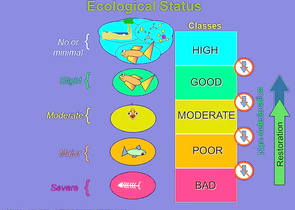
Data show that, in the 1990s, 28.4% of the total length of the Czech Republic’s watercourses were unfavourably modified, which is tens of thousands of kilometres of the river network. According to the current National Biodiversity Strategy of the Czech Republic, the country’s current optimistic targets are at least 300 km of restored watercourses for the 2016–2025 period. The status of watercourses and related floodplains has therefore not seen any significant improvement since the 1990s. Compared with biological and physical/chemical quality elements, monitoring and enhancement of the morphological status of the country’s watercourses has enjoyed a less significant position in the long term. However, apart from the “aesthetical” point of view, its improvement is also of unquestionable importance in terms of water retention in the landscape, flood protection, and drought management. It is therefore a topical issue in society.
Nature Conservation 2021 — 10. 6. 2021 — Research, Surveys and Data Management — Print article in pdf

